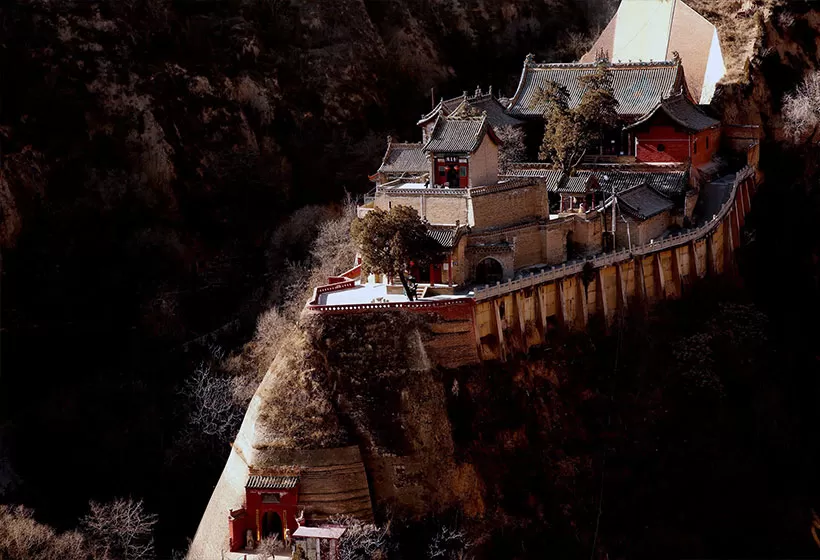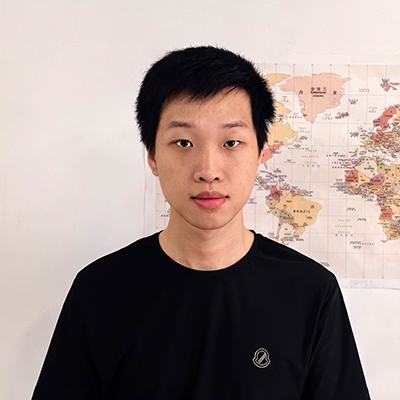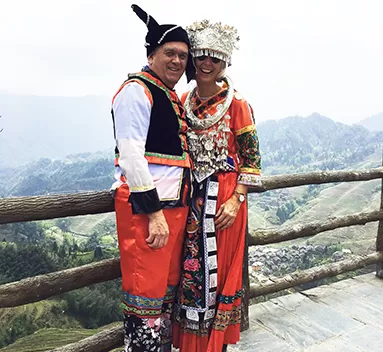Short Introduction to Shanxi Local Culture: History, Custom, Diet, Religion, etc.
Shanxi Province, abbreviated as "Jin", is one of the earliest cradles and central regions of human civilization and Chinese culture. With a recorded history spanning over 3,000 years, Shanxi boasts a rich cultural heritage and is often referred to as the "Museum of Ancient Chinese Culture", which have shaped its distinctive cultural landscape.
Brief History
Shanxi was once a major region for the legendary ancestors of the Chinese people, who established their bases of activity in the area. Archaeological findings, such as the Xihoudu and Dingcun cultural sites, reveal that human activity in Shanxi dates back to the Paleolithic era.
Legendary leaders like Yao, Shun, and Yu have established their capitals and governance in Shanxi, and the first slave society in China, the Xia Dynasty, was also founded in southern Shanxi. During the Shang Dynasty, the province served as one of the central ruling areas, and in the Zhou Dynasty, the Jin State rose to prominence from Shanxi, with Duke Wen of Jin becoming one of the Five Hegemons of the Spring and Autumn period.
Shanxi continued to be influential through the Qin, Han, Wei, and Jin dynasties, with its importance extending across political, military, economic, and cultural spheres. The Tang Dynasty, founded by Emperor Taizong (Li Shimin), who began his uprising in Taiyuan, established Shanxi as a rising place and honored Taiyuan as the northern capital of the empire.
During the Song Dynasty, Shanxi remained one of the most prosperous regions in northern China. In the Yuan Dynasty, Shanxi was regarded as the core region along with Shandong and Hebei.
Shanxi played a pivotal role in China's modern history as well. During the Anti-Japanese War and the Chinese Civil War, the province became a strategic base where the people of Shanxi engaged in fierce resistance, contributing to the revolutionary efforts with countless heroic deeds.
In April 1949, Shanxi was fully liberated, and in September of the same year, the Shanxi Provincial People's Government was established.
Region Culture
San Jin Culture refers to the culture of the Shanxi region. Shanxi, known as "Jin" in ancient times, has long been a cultural center in the Yellow River basin and is a critical cradle of Chinese civilization.
Ethnic fusion has contributed to the development of Buddhism in Shanxi, left the Yungang Grottoes and the temple complexes of Mount Wutai, standing as monumental artistic treasures of Buddhist architecture, stone carvings, and sculptures. Shanxi's opera and theatrical traditions boasts a long history. From the ancient village opera of the Song and Jin dynasties, to the Zaju of Yuan dynastiy, and later the Bangzi opera of the Ming and Qing dynasties, have had a profound influence on Chinese theatrical culture. In addition, Shanxi vinegar, Yaodongs, and folk paper-cutting traditions also reflect the folk culture of the region.
San Jin Culture is a significant contributor to the development of the spiritual, social, and cultural life of the Chinese people, as one of the regions with the most distinct local cultural characteristics.
Folk festivals
Shanxi Province is one of the earliest regions where seasonal festivals and folk customs emerged. The southern region of Shanxi is one of the birthplaces of the Xia Dynasty, while the northern part of the province experienced a long period of cohabitation between Han Chinese and nomadic peoples, leading to the formation of unique local seasonal customs.
- Tiancang Festival
Tiancang (Granary Bursted) Festival, held on the 25th day of the first month of the lunar calendar, is a traditional festival meant to increase the grain stores, symbolizing the hope for a bountiful harvest and abundant provisions. People make it a point to purchase rice and flour on this day, to pray for abundance and well-being for the entire year.
- Liu Yue Liu Festival
The festival is known as the "Return to Mother's Home Festival". During the lunar June 6th, it marks the end of the wheat harvest and a period of agricultural rest, making it an ideal time for family visits. Over time, this festival has evolved into large-scale temple fairs in many parts of Shanxi.
Religious Culture
Shanxi is one of the cradles of Buddhism in China and represents a significant cultural treasure in the history of Chinese Buddhism. With nearly 2,000 years of Buddhist history, Shanxi is home to numerous ancient Buddhist relics and renowned mountains, which were once central to Buddhist cultural activities. The region played a crucial role in the spread and development of Buddhism in China.
Buddhism originated in India and made its way into China along the Silk Road. Shanxi, as a key node on this ancient trade route, became an important center for the dissemination of Buddhism in China. As early as the Eastern Han Dynasty, Buddhist sites began to emerge in Shanxi, such as the famous Mount Wutai and Mount Heng. Over time, many Buddhist temples and Guanyin pavilions were built, forming the characteristics and deposits of Shanxi Buddhist culture.
Custom Culture
Shanxi Province, with its rich history and deep cultural roots, is home to numerous unique and fascinating folk customs, which are valuable assets to Chinese culture.
- Shehuo
Shehuo is a traditional folk entertainment activity popular during the Chinese New Year in Shanxi, including performances such as dragon dances, lion dances, acrobatics, and other forms of festive celebration.
- Paper Cutting
Shanxi paper cutting is one of the oldest forms of traditional Chinese folk art. As a type of "cut-out" art, it is visually striking with its intricate, lace-like designs.
- Kang Painting
Kang paintings, are a distinctive folk art form found primarily in northern China, combining elements of mural art, architectural painting, and New Year’s paintings.
- Embroidery
Shanxi’s traditional embroidery is deeply rooted in the region’s folk culture, with a unique artistic style characterized by its simplicity and rustic beauty with high artistic value.
Diet Style
Shanxi's culinary traditions are highly unique within northern China, with its distinctive dietary customs shaped by a combination of economic, geographical, and cultural factors. The most prominent aspect of Shanxi's food culture is its deep-rooted tradition of wheaten food, which also nurtures the special eating customs of Shanxi people.
Shanxi's wheaten food culture is one of the most iconic representations of regional culinary heritage in China. Its history stretches back over 2,000 years, earning the province the title of "the root of the world's wheaten food". The region's natural conditions and traditional agricultural practices have provided the essential resources for the development of Shanxi's wheaten-food-making tradition. According to historical records, Shanxi boasts over a thousand varieties of wheaten food, all prepared using diverse techniques.
In addition to wheaten food, the people of Shanxi have a long-standing tradition of consuming salt and vinegar, which is deeply embedded in their culinary practices. Vinegar, in particular, plays a central role in Shanxi cuisine, with the region's dishes often incorporating large amounts of it. Nearly every locality in Shanxi produces its own special variety of vinegar, with Shanxi Mature Binegar being the most famous, widely regarded as a culinary treasure.
Cultural Heritage
Shanxi, with its long and illustrious history, is a cradle of ancient Chinese civilization and a repository of rich cultural heritage. The long history has left behind an impressive array of cultural treasures.
Among Shanxi's most significant cultural landmarks are its three UNESCO World Heritage sites, each showcasing the province's distinctive cultural allure. Mount Wutai, where Tibetan Buddhism and Han Chinese Buddhism coexist harmoniously, is also the most prominent among China's four sacred Buddhist mountains. Yungang Grottoes, one of the largest and most significant ancient grotto complexes in China, is one of the four great grotto sites in the country. Pingyao Ancient City is one of the largest and best-preserved ancient cities in China.
In addition to these physical monuments, Shanxi is also a powerhouse of intangible cultural heritage. The region's culinary arts, including noodle-making techniques and vinegar brewing skills, are world-renowned. Shanxi is also famous for its Fenjiu liquor distillation, traditional paper-cutting art, and theatrical traditions, such as Jin opera. These cultural practices are extremely rich cultural treasures of Shanxi.
Customize Your Unique Shanxi Tour

If you are interested in one of the Shanxi itineraries mentioned above, please contact us, and we will be happy to customize it and provide a quote tailored to your preferences.
Alternatively, if you would like to customize your Shanxi Tour, please visit our Shanxi Tour Customized Center. We assure you that you will receive a reply within 24 working hours.
Informative Articles for Your Shanxi Trip
 The New West, Xi County
The New West, Xi County- Travel Guide: attractions, weather, hotels, food, etc.
- Top destinations: recommanded places to visit in Shanxi
- Travel itineraries: itineraries for your reference
- Local culture: brief history, folk culture, religion, etc.
- Weather: the best time and seasons to visit Shanxi
- Top attractions: sightseeing to watch in Shanxi
- Cultural immersions: activities to spotlight your trip
- Unique perspective: top different things to do
- Local food: what to eat while traveling in Shanxi
- Luxury hotels: best accommodation to stay in Shanxi
- Shanxi Tours: customized Shanxi tours for your reference
GREAT FAMILY CHINA TOUR
JULY 2024 We wanted to thank Grace at China Culture tour for organizing a great tour of China. We enjoyed our Beijing - Xian-Chengdu -Guilin -Yangshuo - Shanghai trip. Our local guides Bruce in Beijing, Susan in Xian, Jane in Chengdu, Mike in Guilin and Mary in Shanghai took care of us…read more details »
Teng Han L from SINGAPORE
Ready to Create a Unique Dream Travel?


